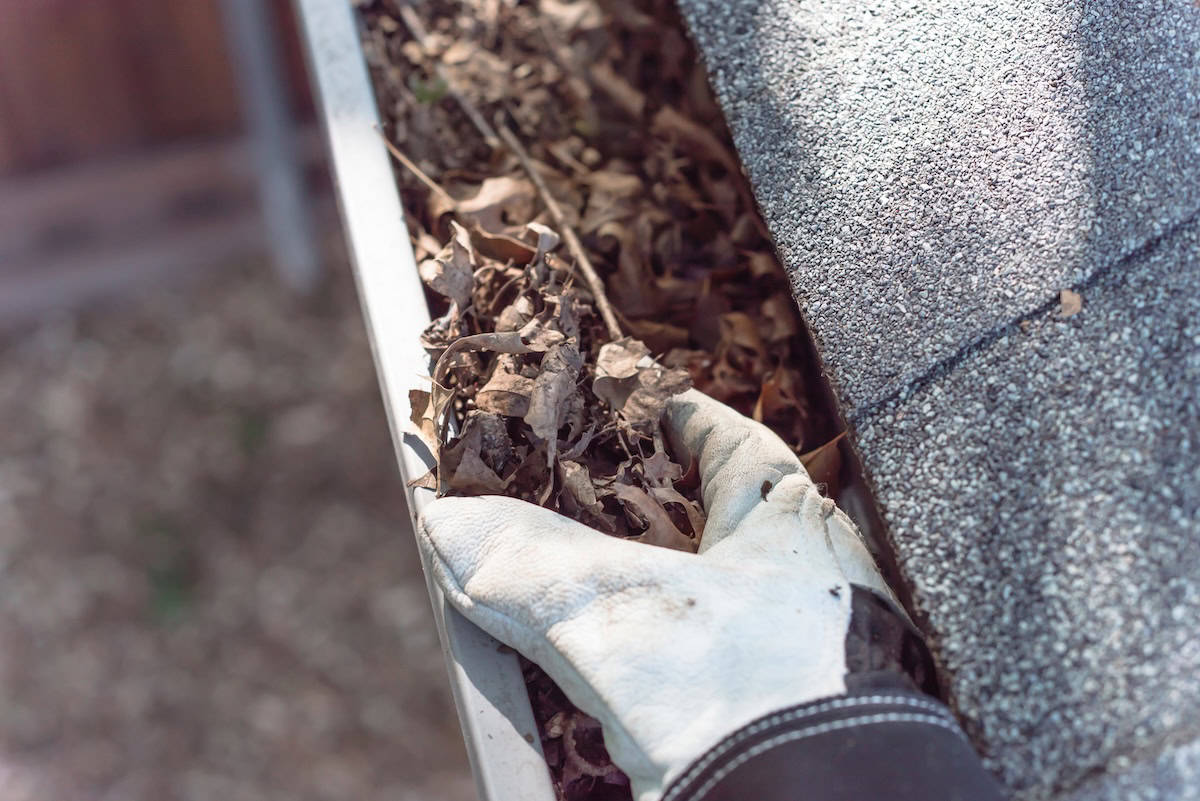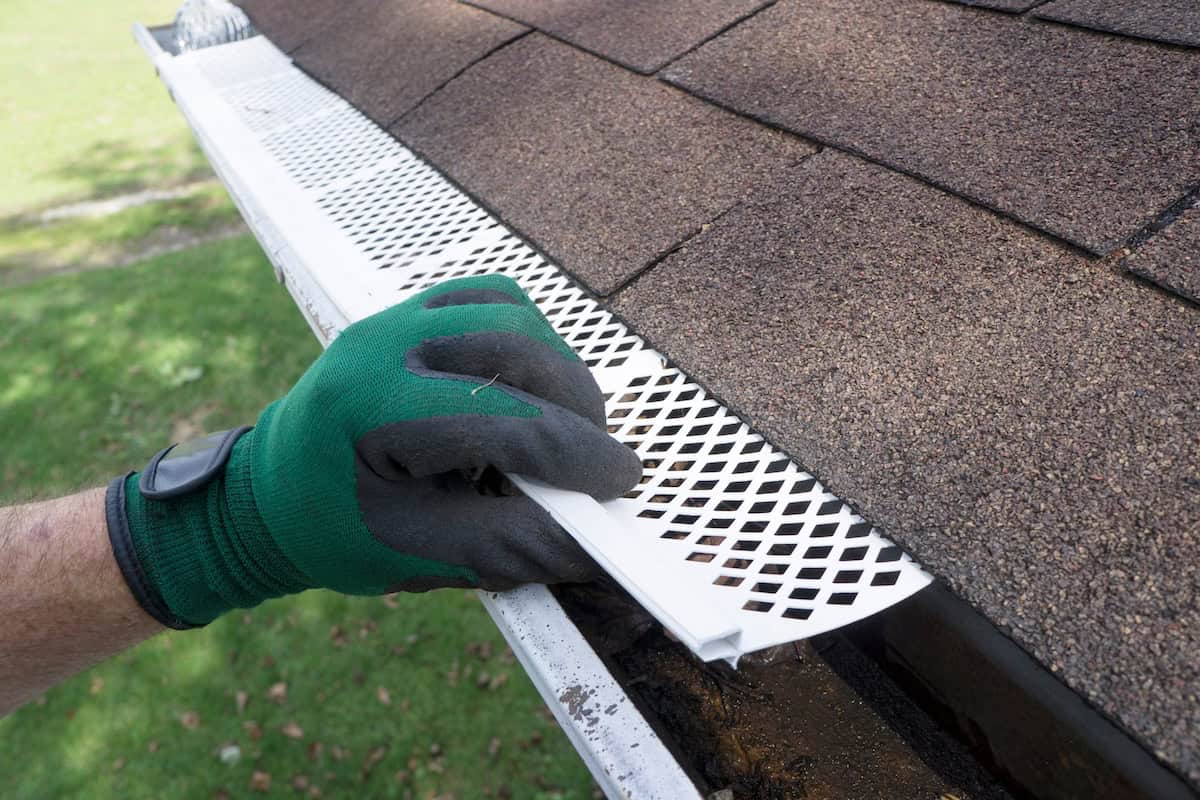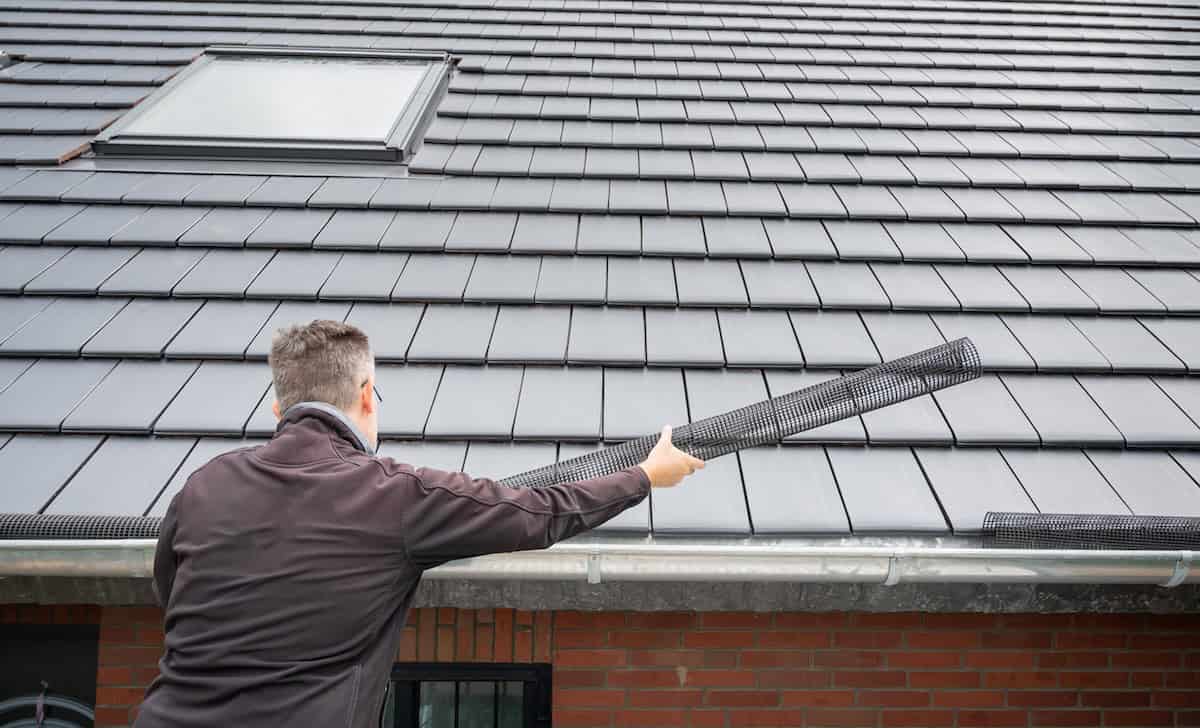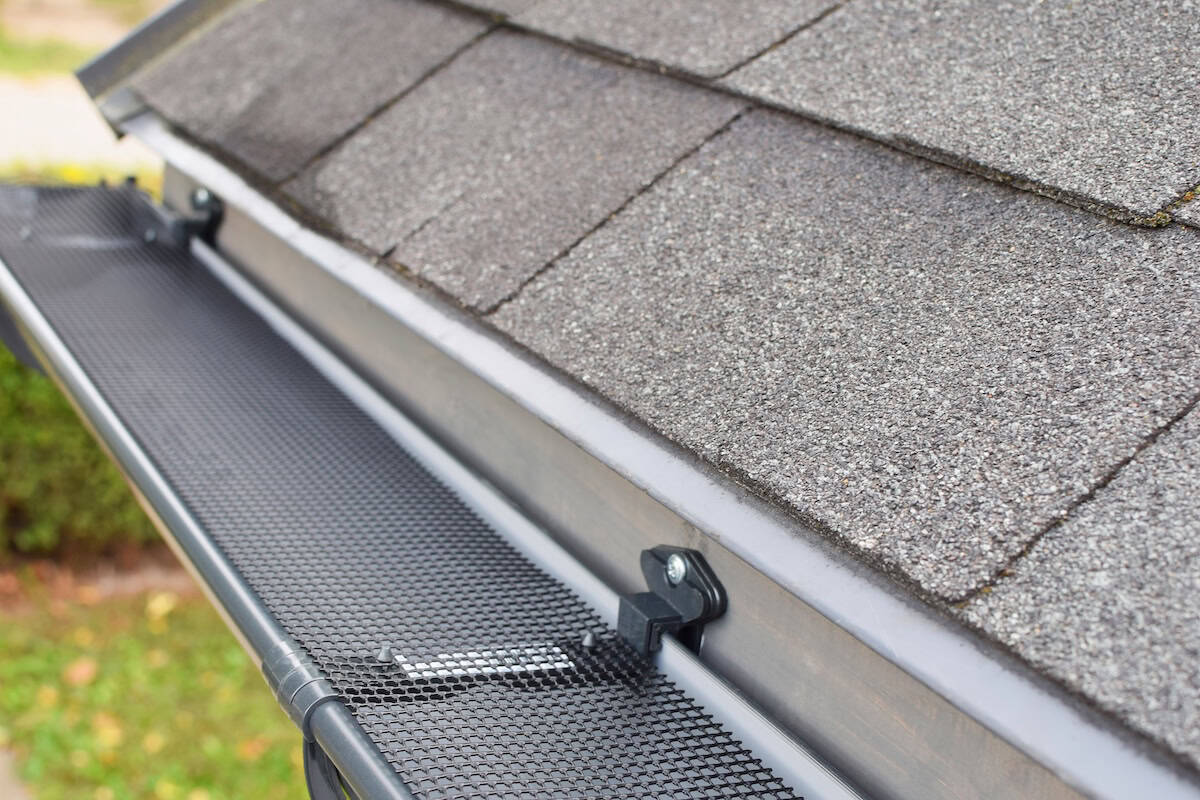Keeping your gutters functioning properly is essential for protecting your home from water damage. Gutter guard installation is one of the best ways to maintain a clog-free gutter system, offering long-term convenience and peace of mind. Without them, your gutters are prone to accumulating leaves, debris, and other blockages, which can lead to overflow or even structural damage to your roof and home.
Here’s what installing gutter guards can do for your home:
- Reduce Maintenance
- Prevent Costly Repairs
- Boost Efficiency of Your Gutter System
For the easiest, most effective results, a well-thought-out approach is essential. Below, we’ll guide you through 5 key steps for a hassle-free gutter guard installation and show you why hiring professionals might be the smartest decision you’ll make for your home.
Key Takeaways
-
- Proactive Protection: Gutter guard installation is a proactive solution to prevent clogs, safeguarding your roof, siding, and foundation from costly water damage.
- Choosing the Right Material: The durability and longevity of your gutter guards depend on the material. Options like aluminum and stainless steel offer different levels of strength and corrosion resistance, ensuring a perfect fit for your home and climate.
- When to Install: It’s time for gutter guard installation if you see signs of a failing system, have specific debris concerns like pine needles, or want to prevent long-term, costly damage.
- Professional Expertise is Key: While a DIY approach is possible, a professional gutter guard installation ensures a custom fit that prevents common mistakes and provides a long-lasting, hassle-free solution.
Why Choose Gutter Guards for Your Home?

The Problem with Clogged Gutters
Clogged gutters are one of the most common problems homeowners face, especially during the fall and rainy seasons. Without proper water flow, rainwater can overflow, causing damage to your siding, roof, or even the foundation. Additionally, standing water in clogged gutters can attract pests or lead to rust and deterioration of your gutter system over time.
The Solution with Gutter Guards
Gutter guard installation is a proactive solution that prevents leaves and debris from entering your gutters while still allowing water to pass through. Whether you opt for mesh gutter screens or reverse-curve systems, the primary goal is the same—to keep your gutters clean and clear without the need for constant upkeep.
Not only do they save time and effort, but gutter guards also increase the life of your gutter system by reducing wear and tear caused by heavy debris loads.
When You Should Install Gutter Guards
Gutter guards are a proactive solution, but knowing the right time to install them is key to protecting your home. It’s best to consider gutter guard installation before a small problem becomes a costly repair. Here are the clear signs it’s time to invest in gutter guards:
- You See Signs of a Failing System: Look for water overflowing from your gutters during rainfall, signs of erosion in your landscaping, or dark streaks on your home’s siding. Ignoring these red flags can lead to a range of costly repairs, from damaged fascia boards to basement flooding.
- You Have Specific Debris Concerns: If your home is surrounded by trees that drop large leaves, small seeds, or stubborn pine needles, you need a solution designed to handle that specific type of debris. The best gutter guard installation for your home will be tailored to your specific environment to provide the most effective protection.
- You Want to Prevent Long-Term Damage: The real danger of a clogged gutter is not just the mess—it’s the irreversible damage it can cause. A professional gutter guard installation is a critical step in preventing these costly, long-term problems and preserving your home’s value.
5 Steps for a Hassle-Free Gutter Guard Installation
Installing gutter guards requires thoughtful preparation and execution to ensure they function properly and last for years. Follow these key steps to set yourself up for success.
Step 1: Assess Your Current Gutter System
Before starting with the gutter guard installation, inspect your current gutter system to ensure there are no underlying issues.
Clean and Inspect the Gutters
- Remove all debris to ensure your gutters are clean and ready for the installation.
- Check for any sagging sections, rust, or cracks that may compromise the functionality of your gutters.
Assess the Downspouts
- Ensure the downspouts are clear and that water flows freely.
- Address any clogs or damages to avoid future drainage issues.
Step 2: Choose the Right Type of Gutter Guards
Gutter guards come in various materials and designs, each suited to different needs. Selecting the right type depends on your home’s location, weather conditions, and budget.
Popular Gutter Guard Options
- Mesh Screens: Made of metal or plastic, these screens block debris while allowing water through. Ideal for areas with heavy leaf fall.
- Foam Inserts: Easy to install, these fit inside the gutters to block debris but may require more frequent maintenance.
- Reverse-Curve Guards: These are designed to direct water into the gutter while forcing debris to fall off the edge. They tend to be more expensive but are highly effective.

Step 3: Gather the Right Tools and Materials
Having the right tools and materials ready ahead of time can save you both time and frustration. Common tools for gutter guard installation include a sturdy ladder, gloves, a screwdriver, and protective eyewear.
If you’re uncertain about the materials or tools you need, consult with a professional installation service to avoid costly mistakes.
Step 4: Install the Gutter Guards
Plan and Measure
Before cutting or permanently affixing anything, measure the length of your gutters to ensure you have enough material to cover the entire system. During the gutter guard installation process, this is especially important with mesh and foam inserts that need precise cutting.
Secure the Gutter Guards
Each type of guard will have a specific installation method. For example:
- Mesh Screens should be secured to the top of the roofline or clipped onto the gutters.
- Foam Inserts are simply placed into the gutter channel without additional fasteners.
Pay close attention to the manufacturer’s instructions to avoid issues that might compromise performance.

Step 5 (Optional): Seek Professional Installation
While DIY solutions can be tempting, professional installation offers several advantages, such as ensuring a perfect fit and avoiding accidents during the process.
At Walsh Roofing, our team is experienced in gutter guard installation for all types of homes. Whether you’re dealing with a large property or hard-to-reach gutters, we’re here to take the hassle out of installation.
A Look at Gutter Guard Materials
While the design of a gutter guard is important, the material it’s made from is what truly determines its durability and longevity. Choosing the right material for your gutter guard installation is essential for ensuring your investment holds up against the elements. For a long-lasting, quality installation, it’s best to work with a team that has a deep understanding of all gutter systems.
- Aluminum: This is a popular and cost-effective choice. It is lightweight, rust-resistant, and comes in a variety of colors to match your home’s exterior. Aluminum is a great all-around option that offers solid performance without a high price tag.
- Stainless Steel: The most durable and long-lasting option, stainless steel is highly resistant to rust and corrosion. It is particularly effective in coastal areas with salt air and is strong enough to withstand heavy snow and ice. While it has a higher upfront cost, its exceptional longevity makes it a smart long-term investment.
- Vinyl (PVC): A budget-friendly option, vinyl is lightweight and easy to handle during a gutter guard installation. It will not rust or corrode, but it is less durable than metal. Over time, vinyl can become brittle in extreme cold or warp in high heat, which can compromise its effectiveness.
- Copper: Copper guards are a premium, high-end option. They are extremely durable, corrosion-resistant, and will not rust. Copper develops a beautiful patina over time, which adds a unique aesthetic to your home. It is a significant investment but will last for decades with very little maintenance.
For a deeper dive into the unique pros and cons of each material, along with other top options, visit our post on the best gutter guards.
FAQs About Gutter Guard Installation
Do Gutter Guards Work in Heavy Rain?
Yes! High-quality gutter guard installation is designed to handle heavy rainfall while preventing debris buildup. Make sure you opt for guards rated for high-volume water flow.
Will Gutter Screens Eliminate Maintenance?
While they minimize the frequency and effort involved, you’ll still need occasional maintenance to check for and remove small debris build-up.
How Long Do Gutter Guards Last?
Most well-made last 10–20 years, but their lifespan depends on the material, proper maintenance, and an excellent gutter guard installation.
Why Trust Walsh Roofing for Your Gutter Guard Needs?
When it comes to protecting your home, experience and expertise matter. At Walsh Roofing, we specialize in professional installation services that guarantee high performance and long-lasting results.
From selecting the best gutter guards for your property to ensuring a seamless setup, we take pride in delivering top-quality customer care and craftsmanship.
Say goodbye to clogged gutters for good. Contact us today to schedule your gutter guard installation and enjoy peace of mind for years to come!

